Have you ever called someone a “sly fox”? Even back in Ancient Greece the fox was celebrated for its cunning, as seen in Aesop’s tale about the fox and the crow. For thousands of years foxes have been known for their incredible intelligence and resourcefulness—and for good reason! These small furry animals are quick, smart, and exceptionally clever. But did you know that foxes are also incredibly cute, smell kind of funky, and make great parents?

Keep reading to learn more about these witty and fascinating creatures as we take a closer look at 10 incredible fox facts!
1. Foxes Live All Over the World and in All Kinds of Habitats
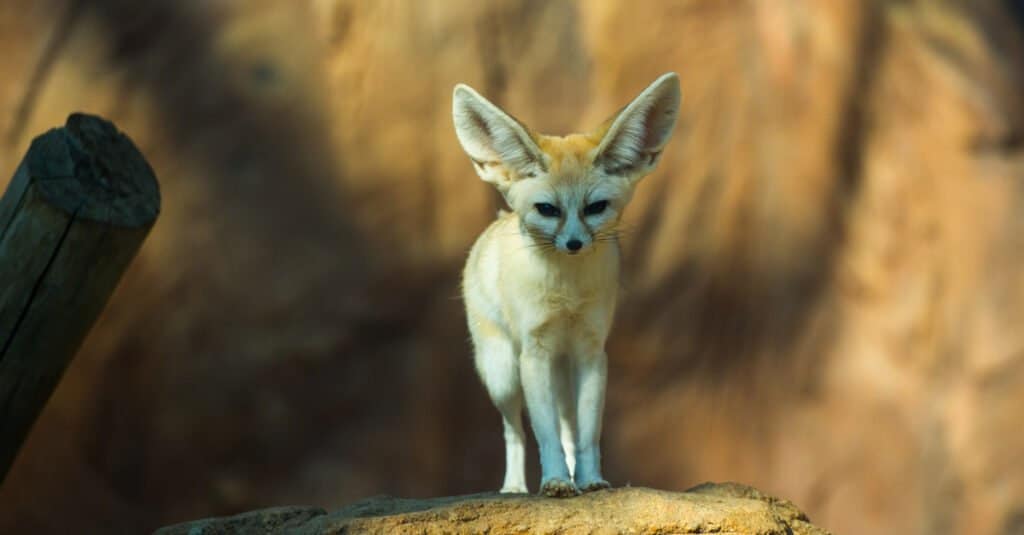
The fennec fox lives underground and only comes out when the temperature falls.
©DONGSEUN YANG/Shutterstock.com
Found on every continent except for Antarctica, foxes live all over the world and thrive in just about every kind of habitat. From countryside meadows and forests to mountains, deserts, grasslands, freezing tundra, and even in human cities. In fact, on rare occasions foxes have even been kept as pets inside human homes! Only about 12 fox species are “true” foxes under the Vulpes genus. However, there are a few animals that we call “foxes” that are not in the vulpes family, like the Cozumel fox, the island fox, and the gray fox.
The fennec fox is the smallest species of fox in the world. These adorably big-eared desert foxes grow between 13.6-15.6 inches long, with tails that are 9.1-9.8 inches long. Fennec foxes live in the Sahara Desert. On the other end of the spectrum is the red fox, which is the largest fox species in the world, as well as the most well-known. When you see a fox in a cartoon or movie, it is usually a red fox. These large foxes live throughout the entire Northern Hemisphere and grow 14-20 inches tall. Their long, bushy tails are 11.8-21.9 inches long.
2. Foxes Are a lot Like Cats—But They Are Actually Related to Dogs
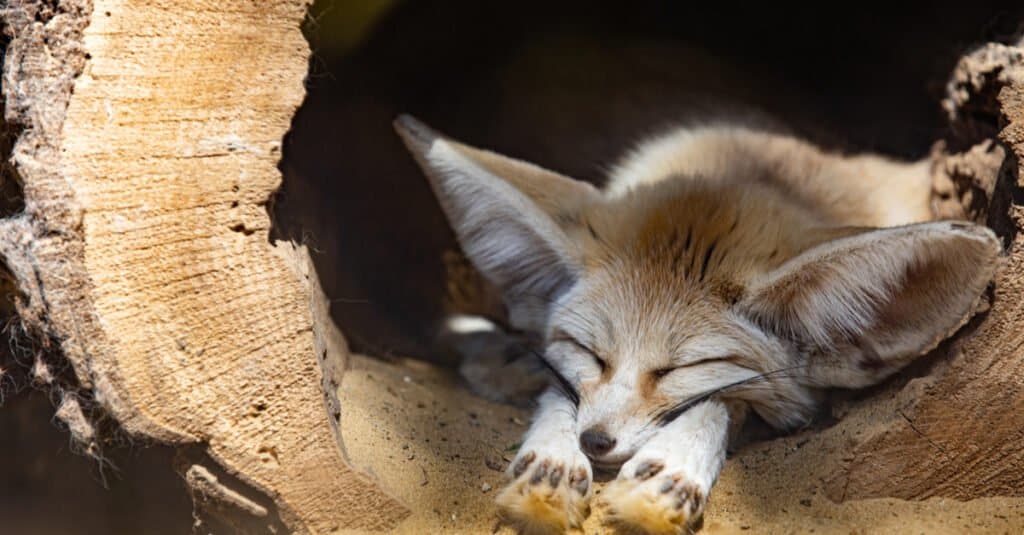
Even though the fennec fox is only 13.6-15.6 inches long, it can still jump 3 feet up into the air!
©icemanphotos/Shutterstock.com
Even though they have more of a feline appearance, foxes are actually part of the canid family—which means they are related to dogs, coyotes, and wolves!
However, foxes are the only kind of canid in the world that has retractable claws—just like cats! In addition, they also have long whiskers on their snouts, as well as on their legs, which help them to navigate in the dark. Foxes also have great night vision and have vertical pupils that look like cat eyes. And believe it or not, cats even purr when they feel relaxed!
3. Foxes Can Smell Pretty Bad
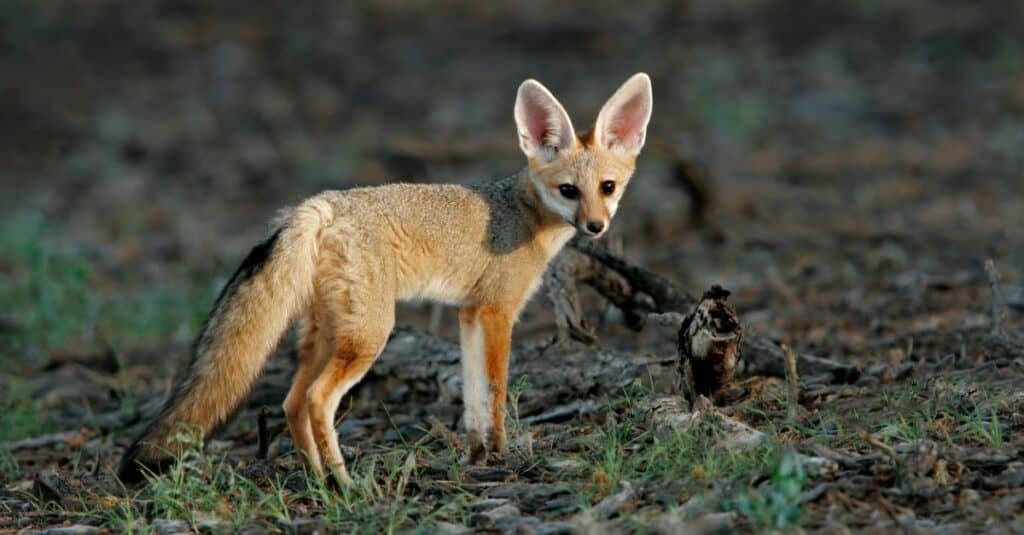
Cape foxes are the only foxes found south of the equator in
Africa
.
©iStock.com/EcoPic
If you’ve ever been around a fox, you probably noticed that it doesn’t smell all that great. Foxes have many scent glands and sacs throughout their bodies—near the base of their tails, in their mouths, and on their skin—that produce chemicals and musky smells. They use these glands, along with their urine, for scent marking, which produces a smell that is pretty hard to get rid of. Interestingly, the “violet gland” at the base of a fox’s tail allegedly produces a musket yet somewhat floral-smelling scent. However, it still doesn’t smell pleasant.
Foxes use their scent glands to communicate with one another and to mark areas where they’ve buried their food, their territories, tree branches, rocks, and even their own partners! Foxes can get a bit possessive, and many seem to feel the need to mark everything so that other foxes know to leave it alone.
4. Foxes Are Extremely Vocal
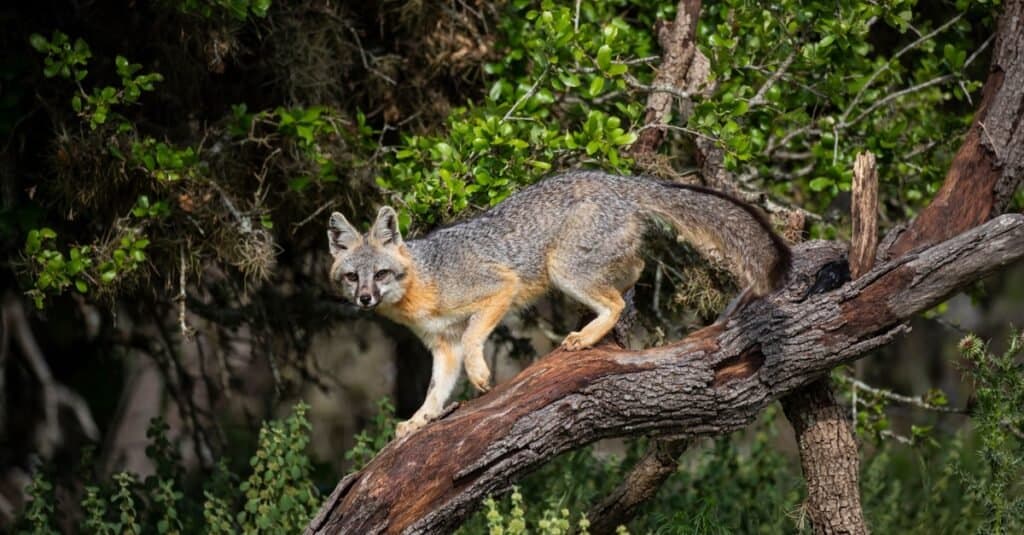
Foxes make noise more similar to a dog’s bark than a woman’s scream.
©Danita Delimont/Shutterstock.com
Remember that goofy song a few years back, “What does the fox say?” Well, it turns out that one of the incredible fox facts is that they actually have a lot to say! Red foxes, in particular, have over 20 different calls and sounds that they use to communicate with one another. Since foxes are nocturnal, you will likely only hear these sounds at night, which can be a bit of a shock if you’re not expecting it—especially if you hear a fox using a high-pitched scream to scare off predators.
When a male fox wants to scare off other competing males, he makes a sound kind of like a woman screaming. When a female red fox wants to attract a mate, on the other hand, she makes short, shrill shrieking sounds. Other fox sounds include barking, howling, screaming, squealing, and ‘gekkering’. Gekkering involves a varied sequence of howls and yelps, combined with a low rattling. It’s an extremely unique sound to say the least. Foxes use gekkering sounds when they are fighting, or when cubs are playing.
5. Many Foxes Mate for Life
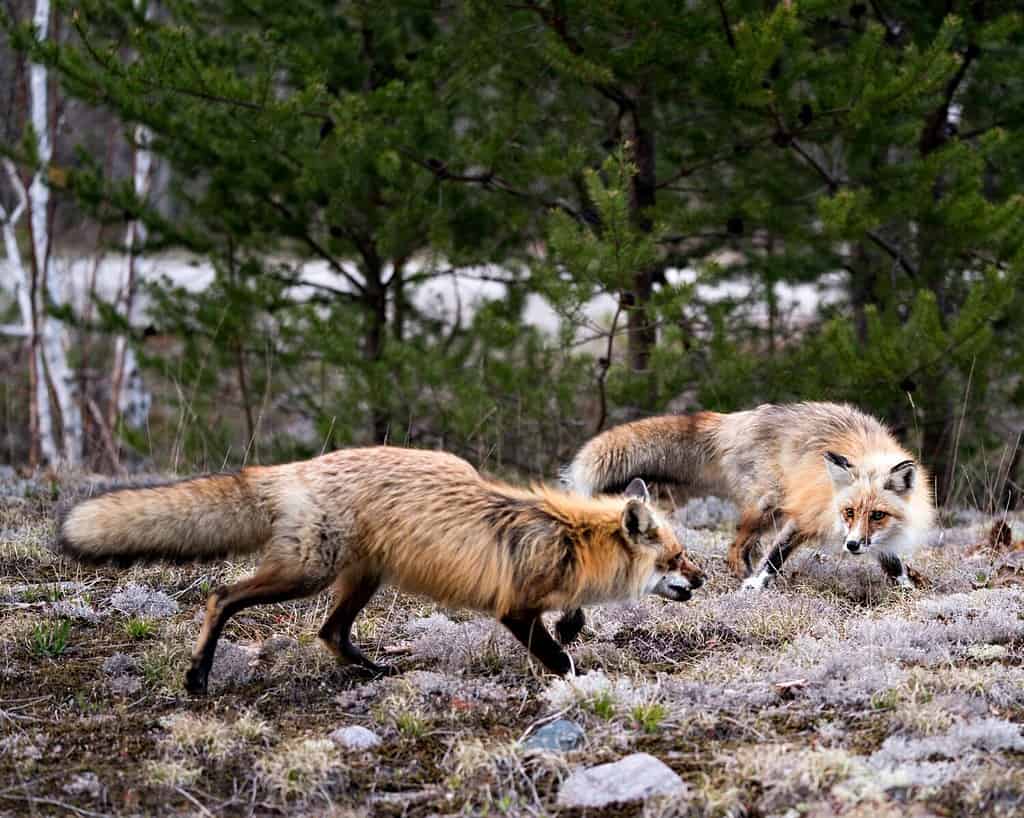
Male and female foxes have an interesting courtship process.
©Rejean Aline Bedard/Shutterstock.com
One of the times you will hear many of these unique fox sounds is during mating season, which is typically from December through February. An amazing fox fact is that most fox species are monogamous and mate for life. In fact, some species will not find a new partner if their mate dies. However, not all species are monogamous. Some mates stick together even when the mating season is over, while others do not seem to associate outside of mating season.
A female fox is called a vixen, while a male fax is called a tod or a dog fox. Baby foxes are called pups, cubs, or kits. Like other canine species, foxes live together in groups called leashes or skulks. However, unlike other canines, foxes hunt alone.
6. Foxes Have Caring Families
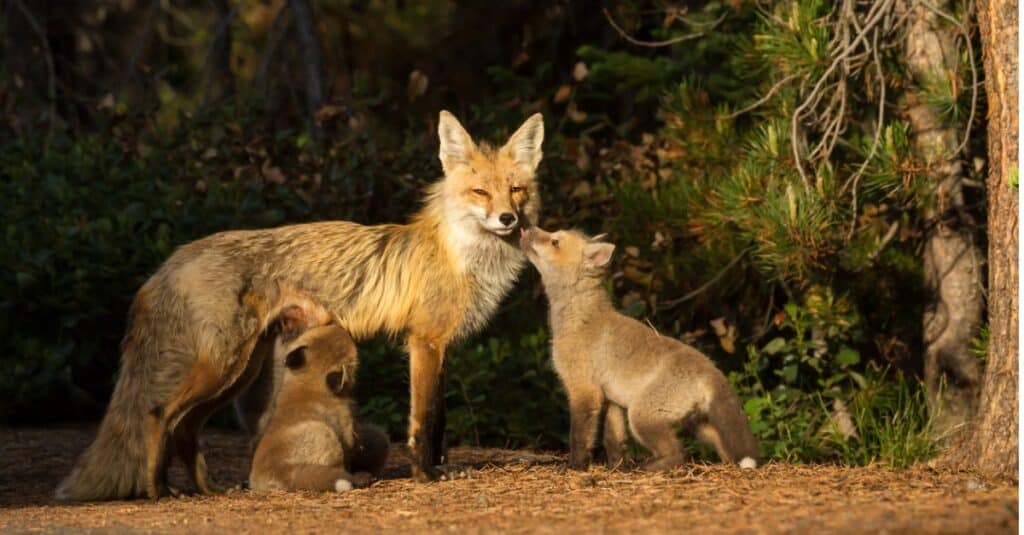
Vixens, or female foxes, are extremely nurturing to their young.
©iStock.com/Wendy/Jeff Sparks/Torquemada
Once the baby fox pups are born, the two parents stay together and raise them as a family. The family lives in an underground burrow or den. Often these dens are passed down to each new generation. There are many fox dens that have been used for over 300 years!
When fox pups are born, they cannot walk, hear, or see, so they are completely dependent on their parents. Fox mothers are extremely nurturing and adaptable when caring for their pups. In one example, a baby fox pup was caught in a snare trap for two weeks until a rescue group was able to release it. The only reason the baby fox pup survived was because its mother continued to bring it food and diligently cared for it—even though it was stuck for two whole weeks!
Another incredible fox fact is that both male and female foxes take turns caring for their pups. Some father foxes will even care for their pups if the mother dies. Occasionally baby foxes will stay with their parents when they are older and help care for the next litter as well.
7. Foxes Are Excellent Hunters with Amazing Senses
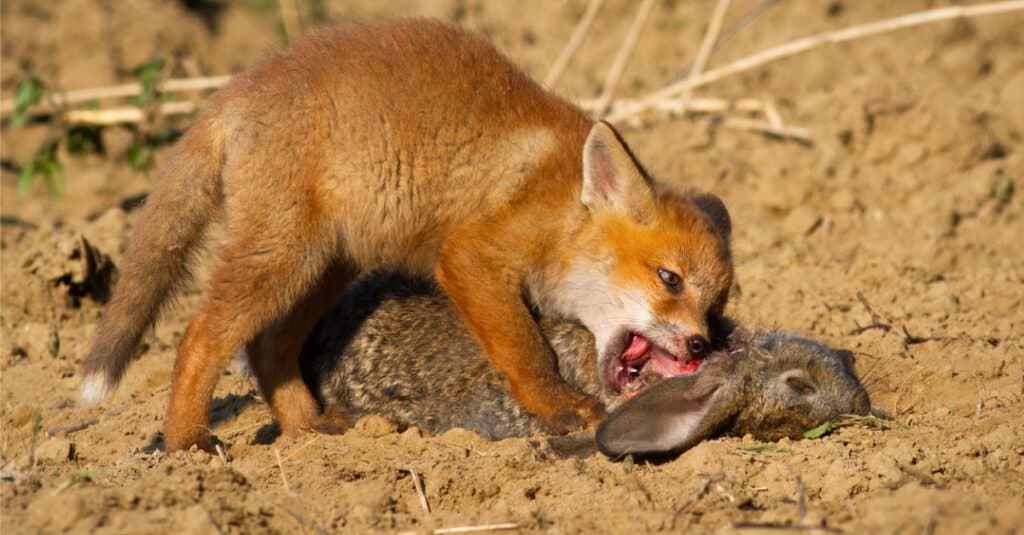
Foxes are incredibly skilled hunters
©iStock.com/JMrocek
One of the reasons that foxes are such excellent hunters is that they have many amazing senses. Their large ears, for example, are not just for show. Like a cat, a fox can move each of its ears independently, helping to funnel sound down to its ear canal. Foxes can also hear difficult low-frequency sounds, like animals (such as rodents) digging underground! It’s been said that foxes can hear something as quiet as a ticking watch from 40 yards away!
In addition, foxes are also extremely fast. Some species can run up to 40 miles an hour! However, speed is not the only trick these cunning animals use when they hunt. If they have extra food, they carefully stash it away and save it for later.
Foxes are omnivores and eat anything from berries and worms to spiders, birds, mice, and even fish! Yes, you read that right—it turns out that foxes can fish! Recently, researchers in Spain watched a red fox strategically stalk and then catch at least 10 carp straight out of a reservoir!
8. Foxes Can Really Jump High
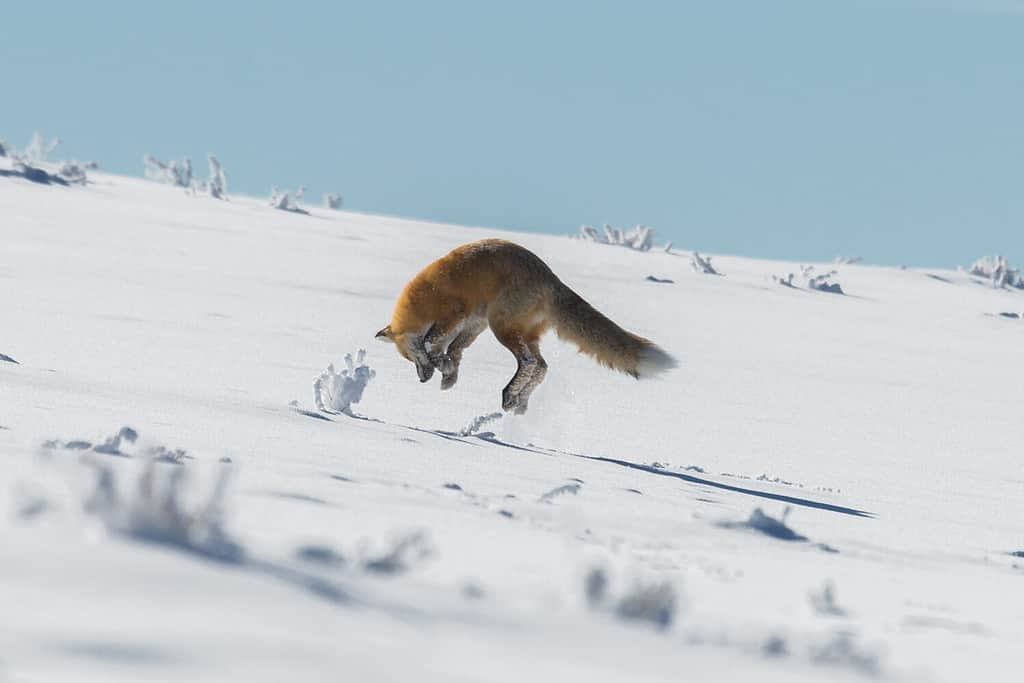
Foxes have an uncanny ability to hunt and pounce on their prey with lightning speed.
©Michelle Holihan/Shutterstock.com
In addition to their incredible senses, foxes are also known for their acrobatic skills. Red foxes, for example, can jump up to 6 feet! The small fennec fox can even jump an impressive 3 feet into the air—that’s nearly 3 times their own height! Desert foxes, on the other hand, can jump across distances of four feet. Jumping is an important skill when it comes to hunting for foxes as they use this to surprise their prey.
In addition to their strategic minds and incredible jumping skills, foxes are the only canine species that has been observed climbing trees! Like the competitors on American Ninja Warrior, foxes can use bushes, trees, boxes, trash cans, and boulders to jump up and then use their retractable claws to climb and propel themselves higher. And like other canine animals, foxes are great at digging as well. Which also means that there are not many fences or obstacles that can keep a hungry fox from its prey.
9. Foxes Have Beautiful Fur – But This Also Gets Them into Trouble

Arctic foxes have stunning white fur
©rokopix/Shutterstock.com
Each species of fox has its own unique and stunningly beautiful fur. The arctic fox, for example, has one of the warmest fur coats on the planet. Their fur keeps their bodies warm and cozy with an internal body temperature of 104 ° F and can withstand cold weather well below freezing! During the winter their fur is a beautiful crystalline white like the snow, but then changes to a darker color during the summer.
Red foxes also have very dense and fluffy winter fur coats. However, due to its beauty and silky softness, unfortunately both wild and captive red foxes have been victims of a very violent fur industry for centuries. Recently in 2004, the cultural practice of fox hunting was banned in Great Britain. However, a tragic fox fact is that today foxes are still subject to violent deaths for their fur. Many fox species are now threatened or endangered as well.
10. Foxes Played a Role in Understanding Domestication and Heredity

A silver fox is actually a red fox with a layer of grey or silver hair. These silver animals are very rare.
©Ondrej Prosicky/Shutterstock.com
During the 1950s, Dmitri Belyaev and Lyudmila Trut wanted to see if they could replicate the domestication process of dogs using foxes. In their famous “farm fox experiment,” the two Russian scientists carefully selected wild silver foxes that acted less aggressively toward humans to breed to see if they could produce tamer foxes over time.
Incredibly, the new generations of foxes began to change. They started developing a more piebald coat in place of their original silver fur, most likely because in captivity they no longer needed the camouflage. The new generations of foxes also had floppier ears, shorter legs, and tails with more curl to them. In addition, as the program continually bred only the tamest and least aggressive foxes, the new babies grew to act more submissive and gentler toward their caregivers. In only 50 years or so of selective breeding, the foxes became much more like dogs!
The photo featured at the top of this post is © iStock.com/Lynn_Bystrom
Sources
- All Things Foxes, Available here: https://allthingsfoxes.com/do-foxes-smell/
- Pest Pointers, Available here: https://pestpointers.com/sounds-and-noises-foxes-make-how-to-identify-them/
- Melbourne University, Available here: https://blogs.unimelb.edu.au/sciencecommunication/2013/10/11/what-does-the-fox-actually-say/
- Daily Mail, Available here: https://www.dailymail.co.uk/news/article-1180392/Fox-cub-survives-weeks-trap-mother-brings-scraps-food-day.html
- Springer, Available here: https://link.springer.com/article/10.1016/j.mambio.2012.05.005
- Arizona University, Available here: http://www.eebweb.arizona.edu/Courses/Ecol487/readings/Early%20Canid%20Domestication,%20AmSci.pdf
- Harvard University, Available here: https://sitn.hms.harvard.edu/flash/2019/foxy-behavior-russian-fox-farm-uncovered-basis-canine-domestication/
Thank you for reading! Have some feedback for us? Contact the AZ Animals editorial team.






